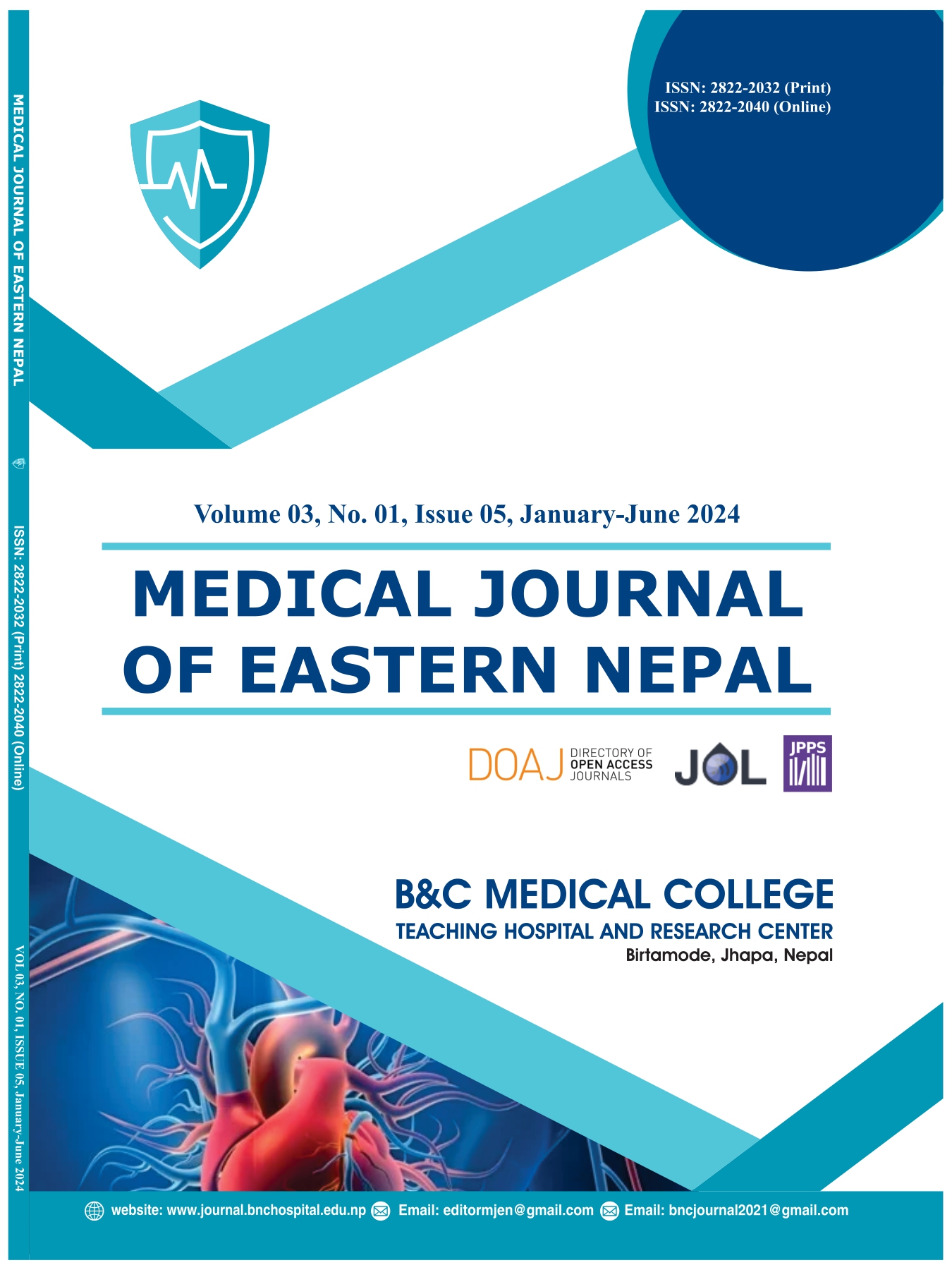Bone Marrow Aspiration and Biopsy Findings in Patient with Hematological Disorders in a Tertiary Care Center from Eastern Nepal: An Institutional Experience
DOI:
https://doi.org/10.3126/mjen.v3i01.67438Keywords:
Bone marrow aspiration, Bone marrow pathology, Cytogenetics, Flow cytometry, Hematological diagnosis, Molecular studies, Trephine biopsyAbstract
Background: Bone marrow study is an important study which is performed when the peripheral blood examination and other laboratory tests and clinical signs and symptoms are suggestive and sometimes inconclusive of both hematological neoplastic and non-neoplastic conditions.
The aim of this study was to study about the indications of bone marrow to assess the diagnostic value and comparison of microscopic findings with immunophenotyping and molecular studies.
Methods: A total of 102cases were analyzed retrospectively and prospectively from January 2022 to October 2023. All the bone marrow aspiration and trephine biopsy received at the laboratory during this period were included in the study and other cases were analyzed form medical record of the department.
Results: Among the 102 cases, mean age of the patient was 48 years and majority were male patients. The age range was between 17-80 years. The male: female ratio was 1.25:1. Weakness was most common presenting complain. Acute leukemia was the most frequent diagnosis (24.5%) followed by myeloproliferative neoplasm (7.8%), primary aplastic anemia (6.9%), myelodysplastic syndrome (5.8%), megaloblastic anemia (4.9%) and plasma cell dyscrasia (3.9%), CLPD (2.9%), ITP (1.9%). Reactive marrow constituted 3.9% and few of the rare diagnosis included hypereosinophilia with PDGFRA mutation, Leishmaniasis etc.
Conclusions: The study concludes the bone marrow aspirate and biopsy examination is still the gold standard technique for screening and definite diagnosis of hematological conditions. Immunophenotyping and molecular studies are important for treatment purpose and in case of cytomorphological dilemma.
Downloads
Downloads
Published
How to Cite
Issue
Section
License
Copyright (c) 2024 B & C Medical College and Teaching Hospital and Research Centre

This work is licensed under a Creative Commons Attribution 4.0 International License.
CC BY: This license allows reusers to distribute, remix, adapt, and build upon the material in any medium or format, so long as attribution is given to the creator. The license allows for commercial use.




